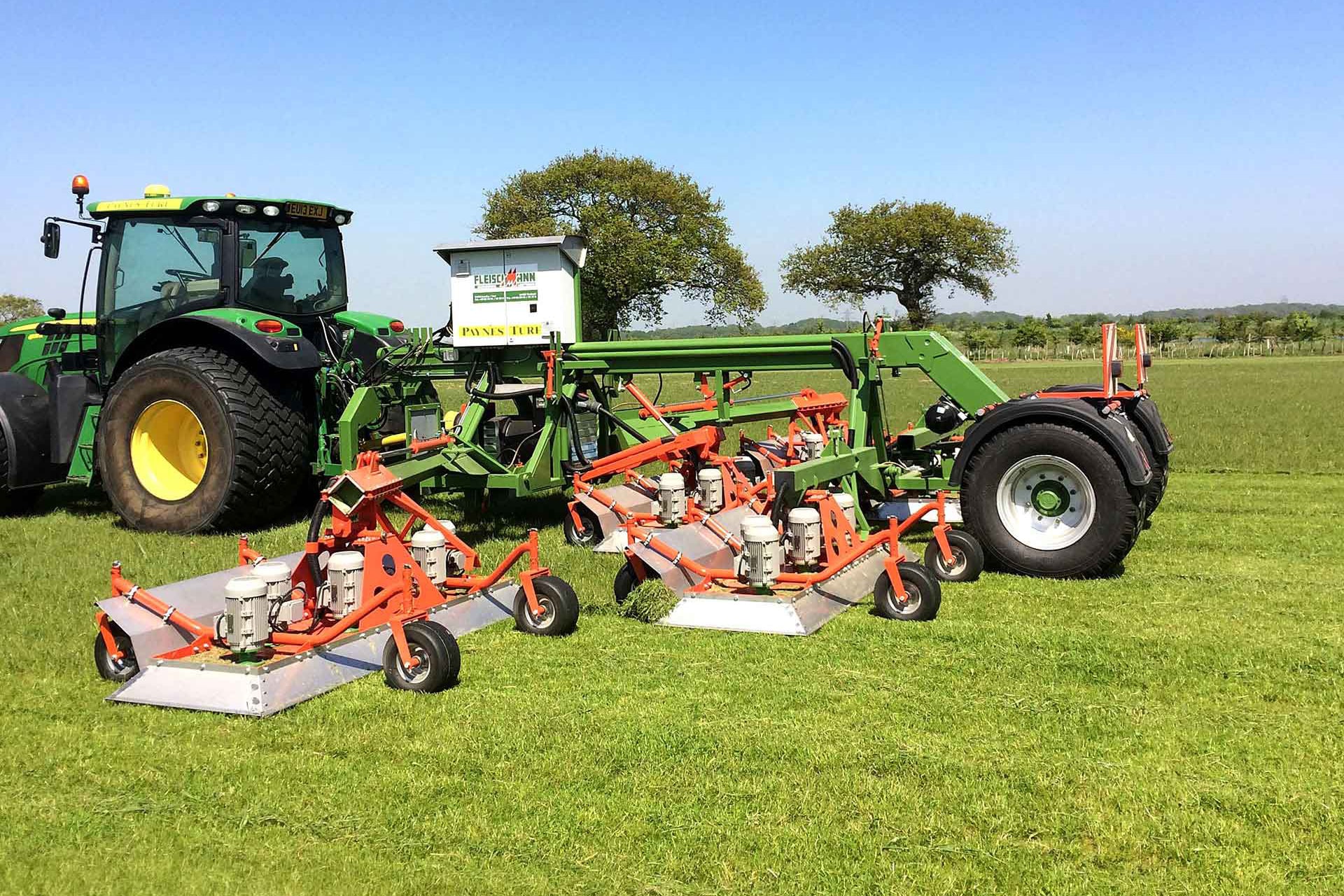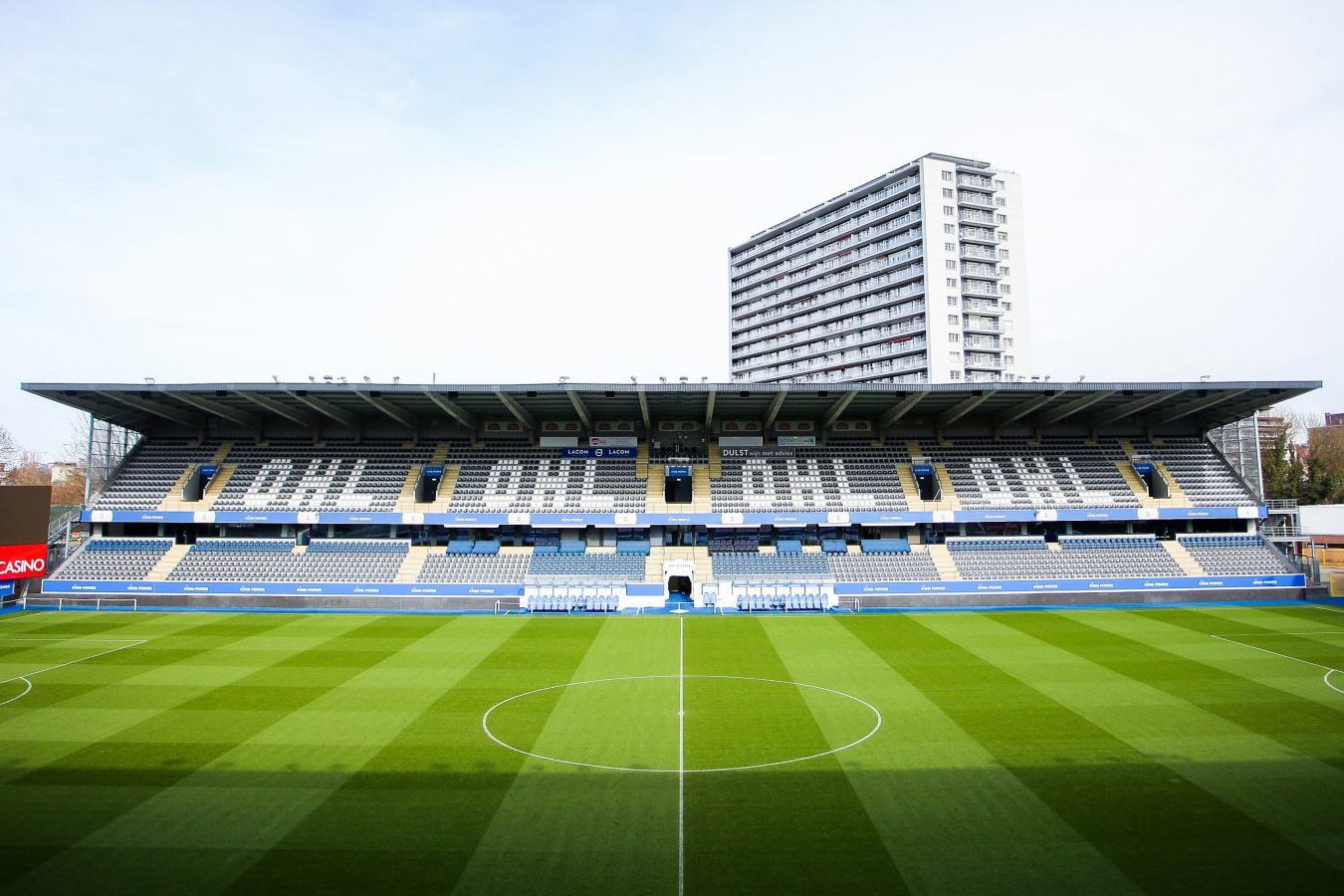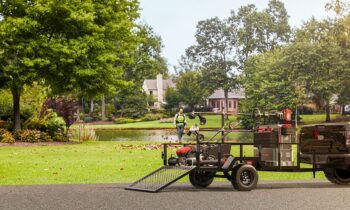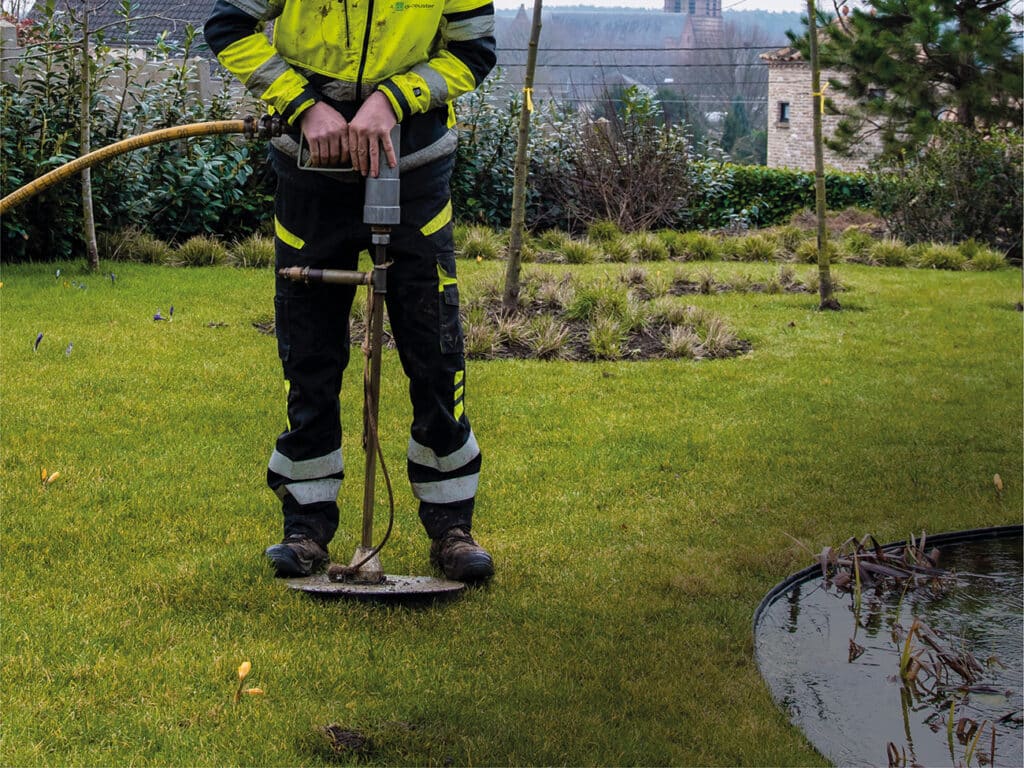
Breathe new life into trees under stress
Targeted approach for long-term results
That primary forests such as the Amazon forest are the lungs of our earth, we have known that for some time. But that each individual tree in our small Belgian country is also a central player in mitigating global warming and all its negative effects? That realization has only begun to grow among most over the past few decades. Twenty years ago, however, contracting firm De Ceuster came up with a solution to preserve our often centuries-old green capital.
"It is mainly old trees that offer an important contribution to, for example, CO2 storage, cooling, air quality and the draining capacity of the soil," says Andreas Popelier, bioengineer and technical advisor at De Ceuster. "In the past an old tree was still quickly felled in order to plant a new one elsewhere, but nowadays there is a growing awareness that first and foremost we need to protect our existing and sometimes centuries-old specimens. Like other plants, they suffer more and more from extreme weather conditions due to the changing climate, but just as much from human influences, such as soil compaction, root damage and an excess of road salt. So they could use quite a bit of help."
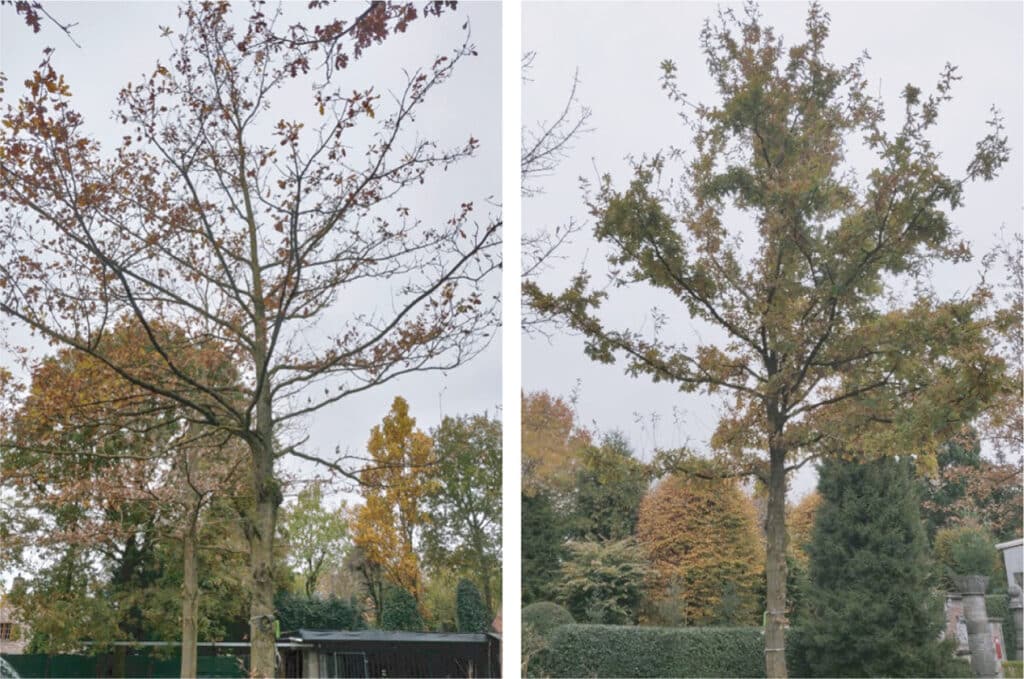
Pioneer
Although De Ceuster is primarily a contracting company, specializing in horticulture, parks, infrastructure and sports and recreation fields, it also developed the Oxyjet: a machine that loosens the soil under the tree's crown projection for better soil structure, and in the same motion also injects necessary nutrients and a soil conditioner to the root zone.
"When in the course of our work we notice a problem for which an adequate solution is not yet available on the market, we put the men to work in our own workshop," Popelier says. "In the case of the Oxyjet, we did that twenty years ago. However, were it only a few people then who realized the importance of our trees and thus the benefit of the treatment, today it is burning hot."
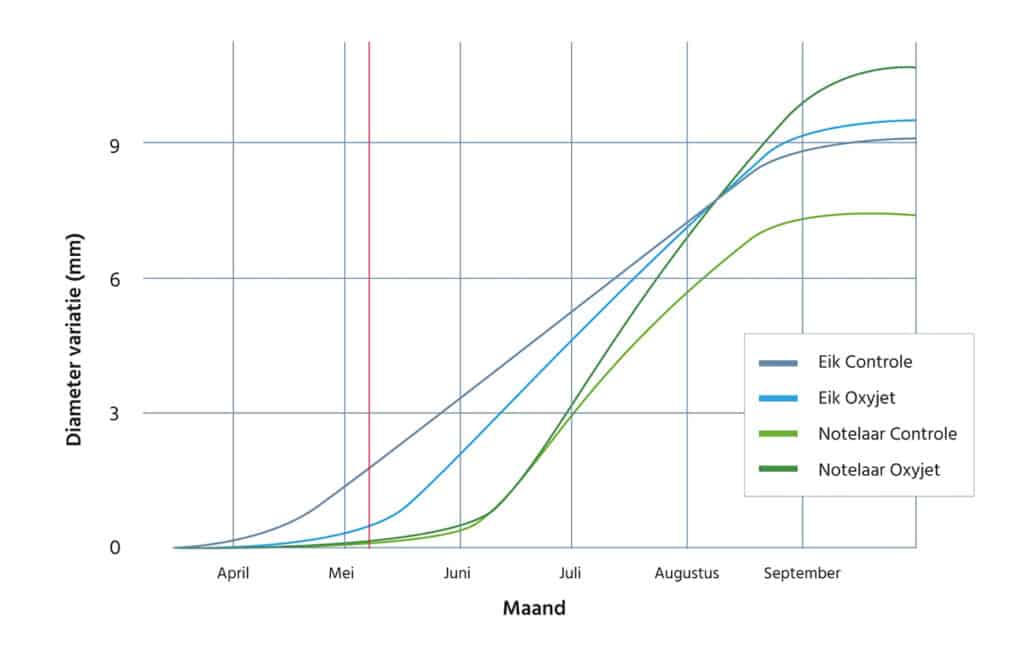
Total treatment
Very little has changed about the machine and the process itself over the past 20 years, but in the meantime the treatment regime has been optimized.
"Today, we use a total treatment consisting of three products: a soil conditioner with biostimulants based on beneficial soil organisms, organic nutrients full of trace elements, and a solution that neutralizes harmful salts, such that they can no longer be absorbed by the tree."
In addition, the highly branched network of channels ensures that when the soil is loosened, space is created for good air and water management of the soil. To maintain this draining effect, the channels can be additionally filled with lava. "We do this mainly with highly compacted soils, such as in a parking lot. Even when there are no trees at all, like on Racing Genk's grounds, it offers an excellent drainage solution."
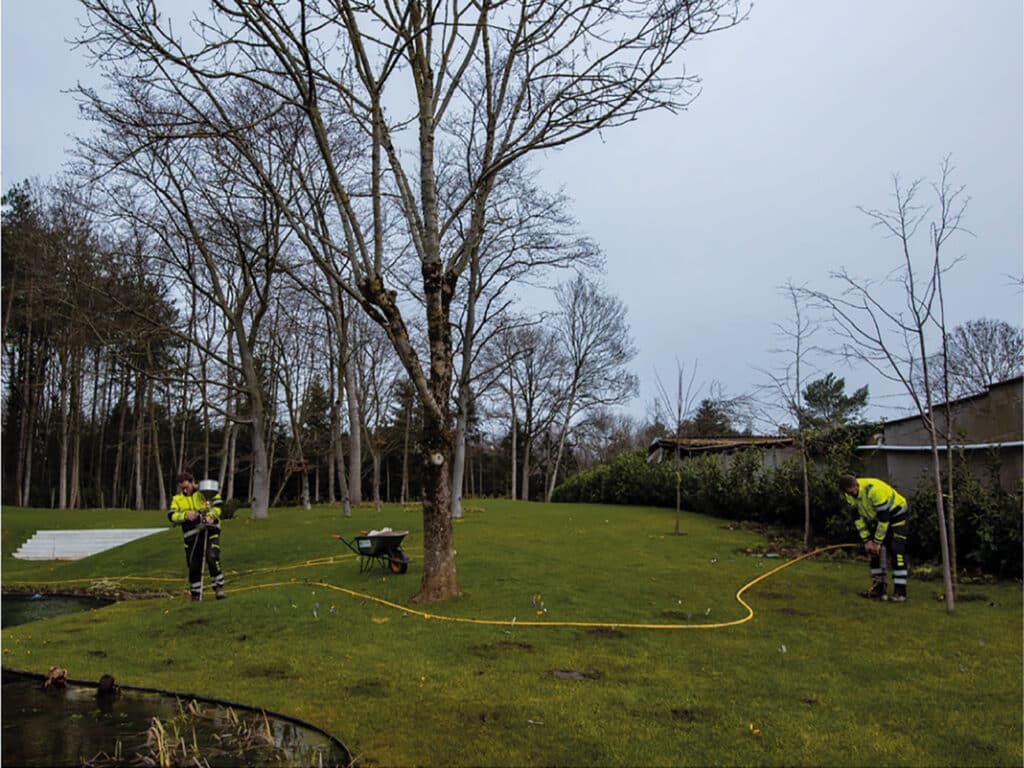
University research highlights positive impact
With Oxyjet, De Ceuster strives for a long-term solution and protection, which consequently can be applied not only curatively but also preventively.
"The challenge with this, however, is that it is sometimes difficult to prove that positive effect in a scientific way," Popelier admits. "That's why last year we started a research project together with the Laboratory of Plant Ecology of the Faculty of Bioengineering at UGent in De Tuinen van Adegem."
Specifically, the growth and health of two oaks and two walnuts are monitored, one treated with Oxyjet each time and one as a control. This is done not only through a visual assessment of such things as the length of the growing season, leaf growth, color and number of young twigs, but also with specialized plant sensors for diameter growth and sap flow.
"In the summer of 2021, we already saw spectacular differences in diameter growth. In the month of July, for example, the diameter growth in the treated oak was 33% more than in the untreated; in the walnut, the difference was even 41%. And that was still a wet and moderate summer. So now it is tremendously looking forward to the results of the hot and dry summer of 2022. Those will be available soon."

